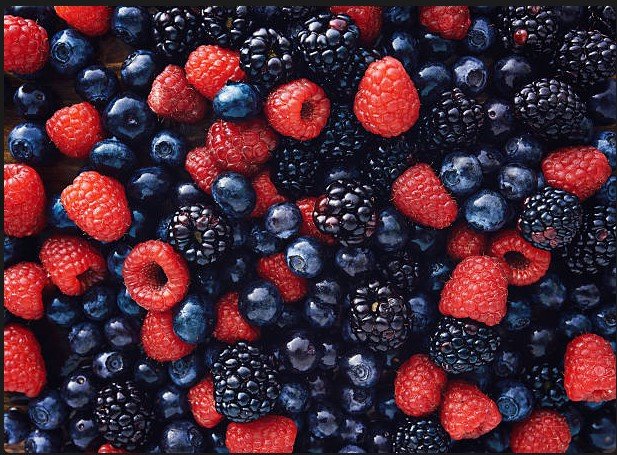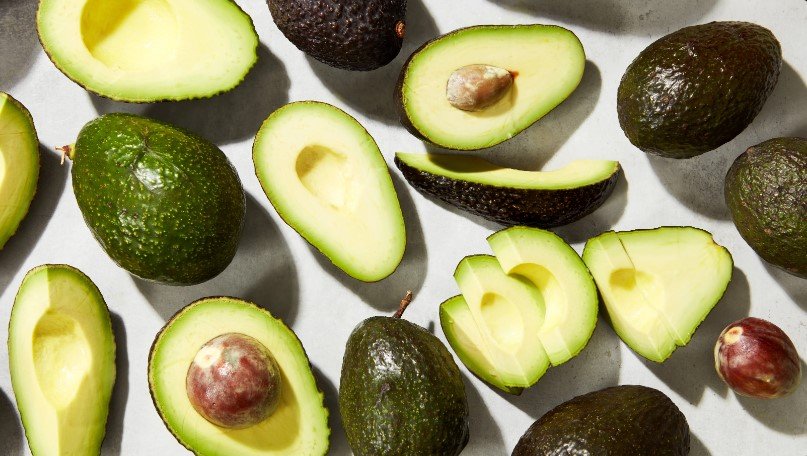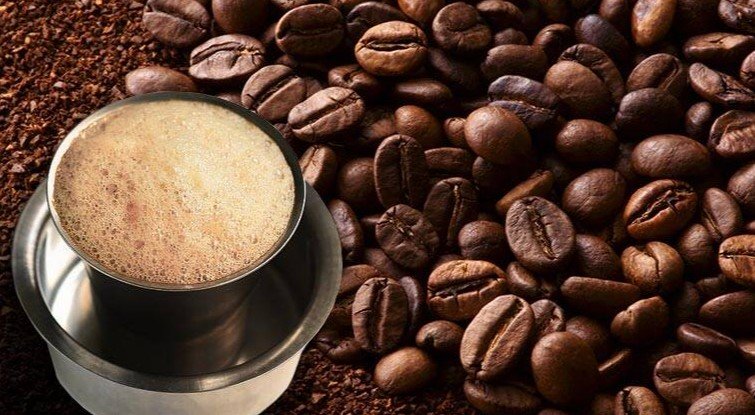10 Foods you should eat to lower your blood pressure.

What is the significance ?
Hypertension, also known as high blood pressure, is often referred to as the “silent killer” due to its asymptomatic nature. Individuals may be unaware of their condition until their blood pressure is measured, or until the detrimental effects of high blood pressure on vital organs become apparent. Alarmingly, half of the 65 million American adults with high blood pressure do not have it under control, leading to insidious consequences such as being the leading cause of stroke in the United States, contributing to numerous heart attacks, overworking the heart muscle, leading to heart failure, and causing damage to the kidneys, vision, memory, and overall life expectancy. This condition is particularly concerning as it can go unnoticed for a prolonged period, resulting in severe health implications.
| Blood pressure categories | |||
| Systolic | Diastolic | ||
| Normal (optimal) | <120 | and | <80 |
| Elevated | 120-129 | and | <80 |
| Stage 1Hypertension Stage 2 Hypertension | 130-139 ≥140 | or or | 80-89 ≥90 |
Here are the 10 best foods for high blood pressure.
Citrus fruits, such as grapefruit, oranges, and lemons, are rich in vitamins, minerals, and plant compounds that have been associated with promoting heart health and reducing the risk factors for heart disease, including high blood pressure. A 2021 study revealed that consuming approximately 530 to 600 grams of fruit per day, equivalent to about four oranges, was linked to beneficial effects on blood pressure management. Specifically, researchers have found that citrus fruits, in particular, may be associated with a reduced likelihood of high blood pressure. Furthermore, the consumption of orange and grapefruit juice has been suggested to potentially aid in lowering blood pressure. However, it is important to note that grapefruit and its juice can interact with common medications for high blood pressure, so it is advisable to consult a healthcare professional before incorporating this fruit into your diet.
Research suggests that regularly consuming citrus fruits, such as oranges, lemons, and grapefruits, can help lower blood pressure. A 2021 study found that eating roughly 530 to 600 grams of fruit per day (about four oranges) was beneficial for blood pressure management. Citrus fruits are rich in antioxidants, including vitamin C and flavonoids, and are also high in fiber and potassium, while being low in sodium. However, it’s important to maintain a balanced diet and consult a healthcare professional, especially if taking medications that may interact with citrus fruits. Therefore, including a variety of fruits, including citrus fruits, in the diet and aiming for the recommended four to five servings of fruits per day is a good approach to potentially help lower blood pressure
Here’s a simple and refreshing recipe for citrus fruit cups:

Ingredients:
- 4 pink grapefruits
- 3 oranges
- 3 tangerines
- 2 cups strawberries
- 1 cup blueberries
- 2 kiwifruits, peeled and quartered
- 2 limes
Instructions:
- Peel the grapefruits, oranges, and tangerines, and separate them into segments. Place them in a large bowl.
- Add the strawberries, blueberries, and kiwifruits to the bowl.
- Squeeze the juice of the limes over the fruit.
- Gently toss the fruit to combine.
- Serve the citrus fruit cups immediately or refrigerate until ready to serve.
2.Salmon and other fatty fish

consuming fatty fish like salmon can be beneficial for lowering blood pressure. Salmon is an excellent source of omega-3 fatty acids, particularly eicosapentaenoic acid (EPA) and docosahexaenoic acid (DHA). These omega-3 fatty acids have been found to have several cardiovascular health benefits, including the potential to reduce blood pressure levels.
Research suggests that omega-3 fatty acids can help lower blood pressure by promoting vasodilation (widening of blood vessels), reducing inflammation, and improving overall heart health. Additionally, omega-3 fatty acids may have mild blood-thinning effects, which can enhance blood flow and contribute to reducing blood pressure.
The American Heart Association recommends consuming at least two servings of fatty fish like salmon per week to obtain the benefits of omega-3 fatty acids. However, it’s important to note that while consuming fatty fish can be part of a heart-healthy diet, it should be combined with other lifestyle modifications, such as maintaining a balanced diet, regular exercise, limiting sodium intake, and managing stress levels, to effectively manage and lower blood pressure.
If you have any specific health concerns or conditions, it’s always a good idea to consult with a healthcare professional or registered dietitian for personalized advice.
To manage stress and lower blood pressure:
- Exercise regularly to release endorphins and improve mood.
- Practice relaxation techniques like deep breathing, meditation, or yoga.
- Maintain a healthy lifestyle with good sleep, balanced diet, and limited caffeine/alcohol.
- Manage time effectively to avoid feeling overwhelmed.
- Seek social support and maintain positive relationships.
- Engage in relaxing activities you enjoy, such as reading or spending time in nature.
- Try mindfulness or mind-body practices like tai chi or mindfulness-based stress reduction.
Remember, finding what works best for you is key. If stress persists, seek professional support.
Here’s a simple and delicious recipe for baked salmon:

Ingredients:
- 2 pounds of salmon fillets
- 2 tablespoons of olive oil
- 1 teaspoon of salt
- 1/4 teaspoon of black pepper
- 4 cloves of garlic, minced
- 2 tablespoons of honey
- 2 tablespoons of soy sauce
- 2 tablespoons of lemon juice
- Fresh herbs (optional)
Instructions:
- Preheat the oven to 400°F (200°C).
- Place the salmon fillets on a lined baking sheet.
- In a small bowl, mix the olive oil, salt, pepper, and minced garlic. Brush this mixture over the salmon.
- In the same bowl, mix the honey, soy sauce, and lemon juice. Pour this mixture over the salmon.
- If desired, sprinkle fresh herbs over the salmon.
- Bake for 12-15 minutes or until the salmon is opaque and flakes easily with a fork.
- Serve the salmon with your choice of sides and enjoy!
3. Green Leafy vegetables

Consuming excessive salt can contribute to fluid retention, increase blood volume, and raise blood pressure. On the other hand, incorporating potassium-rich foods like leafy greens into your diet can help counteract the effects of sodium and promote lower blood pressure. Potassium helps eliminate sodium through urine and relaxes blood vessel walls. Leafy greens such as spinach, broccoli, kale, and collards are excellent sources of potassium.
To obtain the blood pressure-lowering benefits, it is generally recommended to consume 3-6 cups of raw leafy vegetables daily. However, it’s important to note that individual dietary needs may vary, and it’s always a good idea to consult with a healthcare professional or registered dietitian for personalized advice based on your specific health circumstances.
A common guideline is to aim for at least 1 to 2 cups of cooked green leafy vegetables per day for adults. This can include varieties such as spinach, kale, collard greens, Swiss chard, and broccoli. For raw greens, you may aim for 2 to 3 cups per day, as they tend to reduce in volume when cooked.
Green leafy vegetables are packed with essential nutrients including vitamins A, C, and K, folate, iron, calcium, and fiber. Consuming an adequate amount of these vegetables can contribute to overall health, including supporting immune function, promoting healthy digestion, and reducing the risk of chronic diseases such as heart disease and certain cancers.
here is recipe for green leaf
Sautéed Garlic Spinach

Ingredients:
- 1 tablespoon olive oil or butter
- 2 cloves garlic, minced
- 1 bunch fresh spinach, washed and trimmed (about 8-10 ounces)
- Salt and pepper to taste
- Optional: a pinch of red pepper flakes for a bit of heat
- Optional: a squeeze of fresh lemon juice for brightness
Instructions:
- Prepare the Spinach: Wash the spinach thoroughly under cold water and trim off any tough stems or wilted leaves. If the spinach leaves are large, you can tear them into smaller pieces.
- Sauté Garlic: In a large skillet or frying pan, heat the olive oil or butter over medium heat. Add the minced garlic to the pan and sauté for about 30 seconds to 1 minute, or until fragrant. Be careful not to let the garlic brown, as it can become bitter.
- Add Spinach: Add the prepared spinach leaves to the skillet. Using tongs or a spatula, toss the spinach with the garlic and oil until it begins to wilt. Cook for 2-3 minutes, stirring occasionally, until the spinach is just wilted but still vibrant green.
- Season: Season the sautéed spinach with salt, pepper, and red pepper flakes (if using), to taste. If desired, finish with a squeeze of fresh lemon juice for a pop of acidity.
- Serve: Transfer the sautéed garlic spinach to a serving dish and serve immediately as a nutritious side dish or accompaniment to your favorite main course.
4. Berries:

Berries, such as strawberries, blueberries, and raspberries, have been associated with potential blood pressure-lowering effects. Here’s more information on how berries can contribute to lower blood pressure:
- Antioxidants: Berries are rich in antioxidants, particularly a group of compounds called flavonoids. Flavonoids have been shown to have beneficial effects on cardiovascular health, including potential blood pressure-lowering effects. They can help reduce inflammation, improve blood vessel function, and protect against oxidative stress.
- Nitric oxide production: Some studies suggest that certain compounds found in berries, such as anthocyanins, may promote the production of nitric oxide in the body. Nitric oxide helps relax and dilate blood vessels, which can improve blood flow and lower blood pressure.
- Reduction of arterial stiffness: Arterial stiffness refers to the rigidity of blood vessels, which can contribute to high blood pressure. Research suggests that regular consumption of berries might help reduce arterial stiffness, leading to lower blood pressure levels.
- Sodium-potassium balance: Berries are low in sodium and contain a significant amount of potassium. Potassium is a mineral that plays a key role in regulating blood pressure by counteracting the effects of sodium. A high-potassium, low-sodium diet can help maintain a healthy balance and lower blood pressure.
- Inflammation reduction: Chronic inflammation is associated with various health conditions, including hypertension. Berries contain anti-inflammatory compounds that can help reduce inflammation in the body, which may contribute to lower blood pressure.
The amount of berries you should consume per day can vary depending on factors such as your age, sex, overall health, and dietary preferences. However, berries are generally considered a healthy addition to most diets due to their high content of antioxidants, fiber, vitamins, and minerals. Here are some general guidelines:
- Adults: Aiming for 1 to 2 cups (approximately 150-300 grams) of mixed berries per day is a good starting point for most adults. This can include a variety of berries such as strawberries, blueberries, raspberries, blackberries, and others.
- Children: Children can also benefit from including berries in their diet. However, the portion size may be adjusted based on the child’s age and appetite. A small handful of berries (approximately 1/4 to 1/2 cup) is a suitable serving size for most children.
- Health Conditions: If you have specific health conditions or dietary restrictions, such as diabetes or allergies, it’s essential to consult with a healthcare professional or registered dietitian to determine the appropriate amount of berries for your individual needs.
- Fresh vs. Frozen: Both fresh and frozen berries are nutritious options. Frozen berries can be convenient and often have a longer shelf life, making them a practical choice, especially when certain berries are out of season.
- Variety: It’s beneficial to consume a variety of berries to ensure you’re getting a wide range of nutrients. Different types of berries contain varying amounts of vitamins, minerals, and antioxidants, so including a mix of berries in your diet can maximize the health benefits.
Here is Recipe for Berry
Mixed Berry Smoothie
Ingredients:
- 1 cup mixed berries (such as strawberries, blueberries, raspberries, and blackberries)
- 1 ripe banana
- 1/2 cup Greek yogurt (plain or flavored, depending on preference)
- 1/2 cup milk (dairy or non-dairy)
- 1-2 tablespoons honey or maple syrup (optional, for sweetness)
- 1/2 teaspoon vanilla extract (optional, for flavor)
Instructions:
- Prepare the Berries: If using fresh berries, rinse them thoroughly under cold water and remove any stems or hulls. If using frozen berries, you can use them directly from the freezer.
- Blend: In a blender, combine the mixed berries, ripe banana, Greek yogurt, milk, honey or maple syrup (if using), and vanilla extract (if using).
- Blend Until Smooth: Blend the ingredients until smooth and creamy. If the smoothie is too thick, you can add more milk to reach your desired consistency.
- Taste and Adjust: Taste the smoothie and adjust the sweetness or flavorings if necessary. You can add more honey, maple syrup, or vanilla extract according to your preference.
- Serve: Pour the mixed berry smoothie into glasses and serve immediately. You can garnish with additional berries or a sprig of mint for an extra touch.
- Variations: Feel free to customize this recipe based on your preferences. You can add spinach or kale for added nutrition, swap the yogurt for coconut milk or almond milk for a dairy-free option, or throw in a scoop of protein powder for an extra boost of protein.
5. FlaxSeed

Flaxseed: Contains anti-inflammatory omega-3 fatty acids and has been shown to help reduce both systolic and diastolic blood pressure
Flaxseed may lower blood pressure through various mechanisms. Research suggests that the alpha-linolenic acid in flaxseed may inhibit soluble epoxide hydrolase, leading to alterations in circulating oxylipins, which can contribute to the reduction of blood pressure. Additionally, the high fiber content of flaxseed may play a role in reducing cholesterol levels, which can have a positive impact on blood pressure. A systematic review and meta-analysis also indicated that flaxseed consumption may lead to a slight reduction in blood pressure, especially diastolic blood pressure. Therefore, the combination of alpha-linolenic acid and fiber in flaxseed may contribute to its potential to lower blood pressure.
The recommended daily intake of flaxseed is approximately 1-2 tablespoons (about 14-35 grams) per day. Flaxseeds are a good source of omega-3 fatty acids, fiber, and lignans, which offer various health benefits, including heart health, digestive health, and potential blood pressure reduction. It’s important to note that ground flaxseed provides the greatest health benefits, as the body can better absorb its nutrients. Whole flaxseeds can be harder for the body to digest, so it’s recommended to grind them before use. Additionally, it’s advisable to store ground flaxseed in the refrigerator in an airtight, non-transparent container to prevent oxidation and spoilage. It’s always best to consult with a healthcare professional for personalized advice
It’s also crucial to drink plenty of water when consuming flaxseed, as the high fiber content can absorb water and potentially cause digestive issues if not accompanied by adequate hydration. Additionally, if you have any underlying health conditions or concerns, it’s advisable to consult with a healthcare professional or a registered dietitian to determine the appropriate amount of flaxseed for your individual needs.
Flaxseeds can be consumed in various ways, and here are some recipes and tips for incorporating them into your diet:

- Flaxseed Twisty Sticks: These fun twisty sticks are crunchy and herby, featuring flavors like garlic, oregano, and onion powder. They make an excellent grab-and-go snack.1
- Flaxseed Keto Wraps: You can use flaxseeds to make keto-friendly wraps. Ground flaxseeds are mixed with boiling water, spices, and herbs to create a dough, which is then rolled out into flatbread or wrap shapes.2
- Flaxseed Porridge: Combine ground flaxseeds with hot water, milk, or a milk substitute, and add your choice of sweeteners and toppings to create a nutritious and filling porridge.2
- No-Bake Energy Bites: These bite-sized balls are full of energy and flavor. They can be made with a base of ground flaxseeds, along with other nutritious ingredients like oats, nut butter, and honey.1
- Flaxseed Muffins: Ground flaxseeds can be baked into muffins, cookies, and quick breads. They can be added to the batter along with other dry ingredients to boost the fiber and nutrient content of the baked goods.4
- Smoothies: Ground flaxseeds can be added to smoothies for an extra nutritional boost. They blend well with fruits, vegetables, and other smoothie ingredients, adding fiber and healthy fats to the drink.5
6. Avocados

Avocados may help lower blood pressure through several mechanisms. They are rich in potassium, which can help regulate blood pressure by counteracting the effects of sodium35. Additionally, avocados contain oleic acid, a monounsaturated fatty acid that may contribute to reducing blood pressure and inflammation35. Furthermore, the fiber content in avocados can also have a positive impact on heart health and blood pressure regulation3. Research has shown that frequent consumption of avocados is associated with a lower incidence of hypertension4. Therefore, the combination of potassium, oleic acid, and fiber in avocados may contribute to their potential to lower blood pressure.
The recommended daily intake of avocados is generally about one-half to one avocado per day. An average avocado contains approximately 322 calories, 30 grams of healthy fats, 485 milligrams of potassium, and 14 grams of fiber. Avocados are also rich in vitamins and minerals, including vitamin C, vitamin E, vitamin B6, and folate. Consuming avocados in moderation can provide numerous health benefits, such as supporting heart health, lowering blood pressure, and improving overall diet quality. Therefore, incorporating one-half to one avocado per day into your meals can be a nutritious addition to your diet and may help in managing blood pressure and promoting overall health.
An average avocado contains approximately 322 calories. The calorie content of an avocado can vary based on its size, with a whole avocado having between 200 and 300 calories depending on its size. Additionally, an average avocado provides 30 grams of healthy fats, 485 milligrams of potassium, and 14 grams of fiber. Despite being calorie-dense, avocados contain healthy fats and fiber, which can help increase satiety and prevent overindulgence. Therefore, when consumed in moderation, avocados can be a nutritious addition to the diet, offering various health benefits.

Here are some recipes for avocados:
- Avocado Toast
- Mash 1/2 small avocado with 1/2 teaspoon fresh lemon juice, 1/8 teaspoon Kosher salt, and 1/8 teaspoon freshly ground black pepper. Spread the mixture on a slice of whole grain bread. For the full recipe, you can visit EatingWell.
- Avocado Toast with Various Toppings
- Avocado toast is a versatile dish. You can top it with a variety of ingredients such as eggs, tomatoes, jalapeños, fresh herbs, or a drizzle of olive oil. For more variations and tips, you can refer to this Cookie and Kate recipe.
- Avocado Tomato Salad
- Combine avocados with fresh tomatoes to make a simple and refreshing salad.
- Guacamole
- Prepare a classic guacamole by mashing avocados and mixing them with chopped onions, tomatoes, cilantro, lime juice, and salt.
- Avocado Smoothie
- Blend avocados with your choice of milk, yogurt, honey, and ice to create a creamy and nutritious smoothie.
7. Clams

Clams can help lower blood pressure due to their high potassium content. They are packed with potassium, with 20 small clams meeting over 25% of the daily value, making them an excellent food to add to a high blood pressure diet. Potassium is known to help regulate blood pressure by counteracting the effects of sodium. Therefore, incorporating clams into the diet can contribute to the management of high blood pressure.
Here are some ways to easily incorporate Clams into your daily diet:

Healthy New England Clam ChowderIngredients:
- 4 pounds little-neck clams (about 4 dozen) scrubbed
- 4 cups plus 1 Tbsp. water divided
- 1 tablespoon canola oil
- 1 1/4 cups chopped yellow onion
- 3/4 cup chopped celery
- 1/2 teaspoon kosher salt
- 1/2 teaspoon black pepper
- 3 garlic cloves, minced
- 2 bay leaves
- 1 pound Yukon Gold potatoes, peeled and cut into 1/2-inch cubes
- 2 thyme sprigs
- 1 cup 2% reduced-fat milk
- 1/2 cup half-and-half
- 2 tablespoons chopped fresh chives
Instructions:
- Bring clams and 4 cups water to a boil in a large pot over high. Cook until clams open, 8 to 10 minutes. (Discard any clams that do not open.) Using a large slotted spoon, transfer clams to a large baking sheet lined with paper towels; set cooking liquid aside. Let clams stand until cool enough to handle.
- Remove clam meat from shells; coarsely chop. Discard shells. Strain cooking liquid through a fine sieve over a bowl; reserve 3 cups cooking liquid.
- Heat a large Dutch oven over medium-high. Add oil; swirl to coat. Add onion, celery, salt, and pepper; sauté 8 minutes. Add garlic; sauté 45 seconds. Add reserved cooking liquid, bay leaves, potatoes, and thyme; bring to a boil. Cover and simmer 10 minutes or until potatoes are almost tender.
- Whisk together cornstarch and remaining 1 tablespoon water in a small bowl until smooth. Stir cornstarch mixture into chowder; bring to a boil over medium-high. Remove from heat; discard bay leaf. Stir in clam meat and half-and-half until combined. Divide chowder evenly among 6 bowls. Top with chives.
8. Bananas

Bananas can help lower blood pressure due to their high potassium content. One medium banana provides about 375 milligrams of potassium, which is approximately 11% of the recommended daily intake for a man and 16% for a woman. Potassium is a vital mineral for heart health, especially in terms of blood pressure management. It helps balance sodium in the body, and the more potassium you consume, the more sodium your body gets rid of. Therefore, incorporating bananas into the diet can contribute to the management of high blood pressure.
It is recommended to consume foods rich in potassium, such as bananas. One medium banana provides about 375 milligrams of potassium, which is approximately 11% of the recommended daily intake for a man and 16% for a woman. The American Heart Association suggests consuming 3,500–4,700 mg of potassium per day, and incorporating a medium-sized banana into your daily diet can contribute to meeting this recommendation. However, individuals with late-stage kidney disease should consult with their doctor before significantly increasing their potassium consumption, including the intake of bananas. It’s important to maintain a balanced diet and not rely solely on one type of food for managing blood pressure.
Here are some ways to easily incorporate bananas into your daily diet:

A recommended recipe for lowering blood pressure is the “Chocolate, Peanut Butter, Banana, and Oatmeal Smoothie.” This smoothie incorporates bananas, which are rich in potassium, a nutrient shown to help lower blood pressure. Here’s a simple recipe for the smoothie:
9. Olive Oil
Olive oil may help lower blood pressure due to its high oleic acid and antioxidant polyphenol content. Both experimental and human studies have shown anti-hypertensive effects of olive oil. The consumption of olive oil, particularly extra virgin olive oil, is associated with the Mediterranean diet, which has been studied for its impact on blood pressure. A 2020 study published in the Journal of the American College of Nutrition found that the Mediterranean diet was found to lower blood pressure better than a low-fat vegan diet. Additionally, olive oil is rich in monounsaturated fatty acids, which have been shown to decrease “bad” LDL cholesterol and increase “good” HDL cholesterol, contributing to heart health. Therefore, the combination of oleic acid and polyphenols in olive oil may contribute to its potential to lower blood pressure.
The recommended daily amount of olive oil to lower blood pressure is approximately 2 to 4 tablespoons of extra virgin olive oil (EVOO). Consuming this amount of EVOO has been associated with lowering systolic blood pressure, and it is emphasized that the type of EVOO used matters, with high polyphenol EVOO being particularly beneficial. Additionally, a 2020 study found that consuming more than half a tablespoon of olive oil a day may lower the risk of heart disease, and it has been shown to lower blood pressure. The Mediterranean diet, which includes a significant amount of olive oil, has been studied for its impact on blood pressure and has been found to lower blood pressure better than a low-fat vegan diet. Therefore, incorporating 2 to 4 tablespoons of extra virgin olive oil into the daily diet may help in the management of high blood pressure.
Here are some ways to easily incorporate olive oil into your daily diet:


- Make Your Own Salad Dressings: Use olive oil as a base for homemade salad dressings. Combine it with balsamic vinegar, lemon juice, or your favorite herbs and spices for a flavorful dressing.
- Use Olive Oil As A Finishing Oil: Drizzle high-quality extra virgin olive oil onto warm, finished dishes to enhance their natural flavors. This can be done with creamy soups, cooked meats or fish, roasted vegetables, and more.
- Try Baking With Olive Oil: Substitute olive oil for butter or vegetable oil in baked goods for a healthier fat option and a richer flavor.
- Blend it into Your Coffee: Add a tablespoon of extra virgin olive oil to your black coffee or latte for an extra nutrient boost.
- Marinate Cheese and Olives: Create an elevated appetizer by marinating cubes of feta and olives in extra virgin olive oil, along with dried spices like rosemary, oregano, and red pepper flakes.
- Use in a Marinade: Whisk together olive oil, lemon or lime juice, and spices to make a marinade for vegetables, chicken, fish, or meat.
- Drizzle Over Ice Cream: Surprisingly, extra virgin olive oil pairs beautifully with vanilla ice cream for a unique and delicious treat.
- Drizzle Over Yogurt and Granola: Add a drizzle of olive oil over yogurt and homemade granola for a flavorful and nutritious breakfast.
- Roasting: Use extra virgin olive oil for roasting vegetables, making juicy roast beef, or caramelizing crispy potatoes.
10. Cinnamon

Cinnamon may help lower blood pressure through various mechanisms. Several studies have indicated that cinnamon consumption is associated with a notable reduction in both systolic and diastolic blood pressure. The potential blood pressure-lowering effects of cinnamon are attributed to its ability to improve the body’s sensitivity to insulin, reduce inflammation, and act as an antioxidant. However, it’s important to note that while some studies have shown promising results, the evidence on the effectiveness of cinnamon for lowering blood pressure is still somewhat controversial, and more research is needed to confirm its benefits.
The recommended daily intake of cinnamon is approximately 1/2 to 1 teaspoon (2-4 grams) per day, according to some experts and the U.S. Department of Health. The tolerable daily intake for coumarin, a compound found in cinnamon, is about 0.05 mg per pound of body weight. This means that for a 130-pound person, the safe daily intake would be about 5 mg. It’s important to note that high doses of cinnamon, particularly Cassia cinnamon, which is rich in coumarin, may be toxic and cause potential side effects. Therefore, it’s advisable to consume cinnamon in moderation and be mindful of the type of cinnamon being used.
Here are some creative ways to incorporate cinnamon into your meals and snacks:

- Coffee: Add a dash of cinnamon to your coffee for a flavorful and aromatic boost.
- Oatmeal: Sprinkle cinnamon on your oatmeal for a warm and comforting breakfast.
- Pancakes: Incorporate cinnamon into your pancake batter for a delicious and fragrant twist.
- Sweet Potatoes: Roast sweet potatoes with a sprinkle of cinnamon for a healthy and flavorful side dish.
- Apples: Pair sliced apples with a dash of cinnamon for a simple and nutritious snack.
- Granola: Mix cinnamon into your homemade granola for a tasty and wholesome breakfast option.
- Yogurt: Stir cinnamon into your yogurt for a quick and easy flavor enhancement.
- Baking: Use cinnamon in baking recipes such as muffins, cookies, and bread for a delightful aroma and taste.
- Smoothies: Add a pinch of cinnamon to your fruit smoothies for an extra layer of flavor.
- Roasted Nuts: Toss mixed nuts with cinnamon before roasting for a delicious and healthy snack.
CHARM-retirement.com




This was an amazing read! Your insights on this topic are very valuable and have given me a lot to think about. I appreciate the time and effort you put into researching and writing this post. Thank you for sharing your knowledge with us.